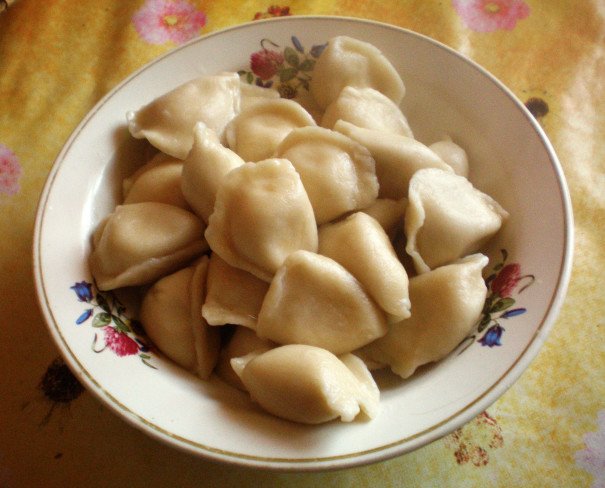
The Free Men of Ukraine Eat Trophies for Breakfast

The Free Men of Ukraine Eat Trophies for Breakfast
Varenyky in Zaporizhia
It has been a while since I last visited the city of my birth, Zaporizhia, in the southeast of Ukraine. The frontline is just a little more than 100 miles east of the city, and every time I thought of a visit it sent shivers down my spine.
However, when my Turkish fiancé and I finally got there, nothing betrayed any sign of the war raging nearby. The streets were busy with weekend shoppers and parents strolled leisurely with their kids along the riverside.
As we were being whisked home for breakfast, my dad pointed in all directions, treating us to chunks of the city’s history.
“This is Khortytsia,” he said, stopping the car and motioning us to step out. He was pointing at a huge island, the river Dnieper foaming over its rocky shore.
“It is from here that Cossacks launched their attacks against the Ottomans,” he said and looked at Huseyin with a smile.
Zaporozhian Cossacks (the word “cossack” being a Turkish word for “free man”) are the pride of Ukrainians. They were runaway serfs from Poland and Russia, who formed settlements that later grew into an independent political and military force. In such settlements, Cossacks trained and then launched attacks against their encroaching neighbors: the Polish–Lithuanian Commonwealth, the Tsardom of Russia, the Ottomans, and the Crimean Tatars. There is a vivid painting by Ilya Repin (1844–1930), “Zaporozhian Cossacks write to the Sultan of Turkey,” in which Cossacks are depicted in their traditional wide pants, composing an insulting letter to their enemy from across the Black Sea.
Recently, Zaporozhian Cossacks were proclaimed the first Ukrainian Army and their official day became the Day of Ukrainian Army. This brought Zaporizhia into national focus, as the president made a speech in Khortytsia, while hundreds of military school students gave a pledge of allegiance to the state and were then treated to the traditional Ukrainian dish of varenyky.
It was varenyky that were waiting for us at home, as well. In Ukraine, varenyky are usually served on special occasions, since its preparation is time consuming. I remember all the women in my family gathering to chat over the table while preparing them: first making the dough out of flour and eggs, then rolling it into long sausages and cutting them into plump circles, which were then flattened with a rolling pin and filled with various stuffings. After their corners were connected together to form a crescent, the dumplings were dropped into boiling water and served with large dollops of sour cream.
That morning, steaming varenyky stuffed with salted cottage cheese mixed with dill on one plate and those with sour cherries and sugar on the other waited for us on the table. My mom was scanning the face of my fiancé for a sign of approval, while my dad noted that varenyky, in fact, originated in Turkic cuisine. Varenyky resemble Turkish manti, little dumplings filled with mutton and garlic, though in Ukraine their recipe was heavily modified: instead of mutton they are now filled with pork or potatoes, cottage cheese or fruits.
“Here in the southeast our culture has been influenced by so many other cultures,” my dad said, and it was with a note of pride that he mentioned the tumultuous history of this border area. Maybe because in the end, it was the Ottomans who had to retreat. The Cossacks stayed, although they borrowed their wide pants, curved swords, and varenyky from their mortal enemy, as a trophy.